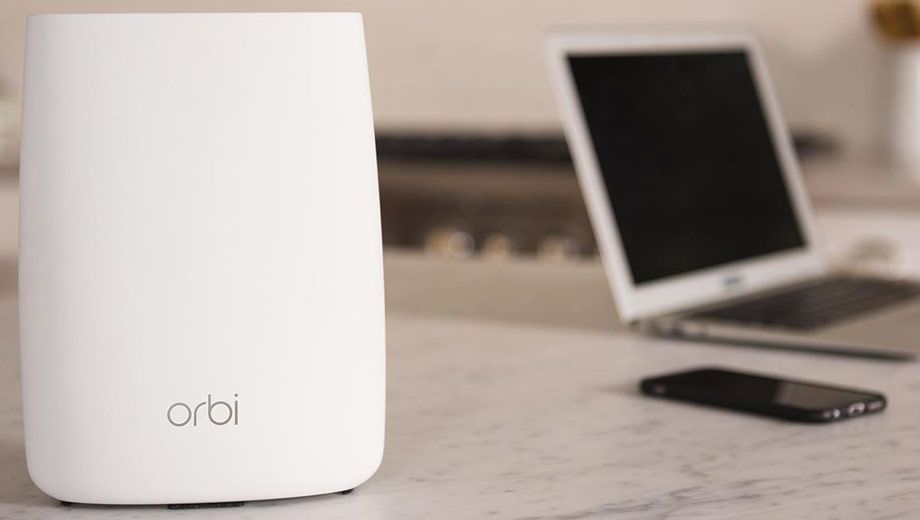Netgear Orbi is a smart approach to banishing home WiFi deadspots

If your home wireless network is bedevilled by buffering, dropouts and dead spots, your router might not be to blame.
It’s just one little back box, after all… and in sprawling single-level house, split-level apartment or three-story terrace those radio waves can only travel so far.
As a certain Starfleet engineer might say, "ye cannae change the laws of physics".
You can, however, make them work in your favour – which is precisely what Netgear’s Orbi WiFi system does with a clever two-part approach to beating the WiFi blues.
There’s a conventional Orbi router fed by your ADSL modem or cable gateway, which will typically live in your home-office or tucked away in a corner of your lounge room.
But the Orbi kit includes a second unit which works like a satellite to boost your WiFi range.
It’s linked to the first Orbi via a dedicated channel outside of the usual two WiFi bands (which is why Netgear touts the Orbi as a “tri-band system”) to re-broadcast your network at full strength, providing saturation coverage in what were formerly no-go zones.
You can of course buy a range extender for your existing WiFi router, but it will limit the speed of your existing setup and can be harder to configure.
In fact, because Orbi spreads the WiFi load across two routers there’s more bandwidth and signal to go around.
Netgear suggests you position the satellite roughly in the centre of your house or apartment, where it’ll radiate a wireless signal equally in all directions.
Both of the Orbi towers come pre-paired for easy setup, and boast a combined wireless range around 370m² (4,000 square feet): enough to spread out to the patio and poolside, up into the attic and down into the mancave.
From next year Netgear will sell individual Orbi units if you need even greater coverage, such as reaching a self-contained studio or teenager’s crib in the backyard.
Each Orbi sports a full complement of hard-wired network ports as well as dual-band 802.11 wireless (on fast 5GHz and mediocre 2.4GHz) at up to 3 Gigabits per second, providing more than enough bandwidth to be shared across a home full of laptops and Netflix-streaming TVs.
(Each Orbi also has a USB port which, at the time of writing, is “reserved for future use” – meaning that right now you can’t plug in a hard drive, memory stick or printer for use across the network.)
Another point of difference to conventional routers is that the Orbi isn’t an eyesore, its design shaped by the desire to have it out in the open rather than tucked away in a corner.
The gentle curves and absence of rapidly-flashing LEDs could see it mistaken for a strange piece of white pottery perched on on a bookshelf or side table as it gently bathes your home in WiFi.
The Netgear Orbis goes on sale in Australia in October at $749. Yes, that’s pricey – but it’s a smart, stylish one-shot cure for your home WiFi woes.







